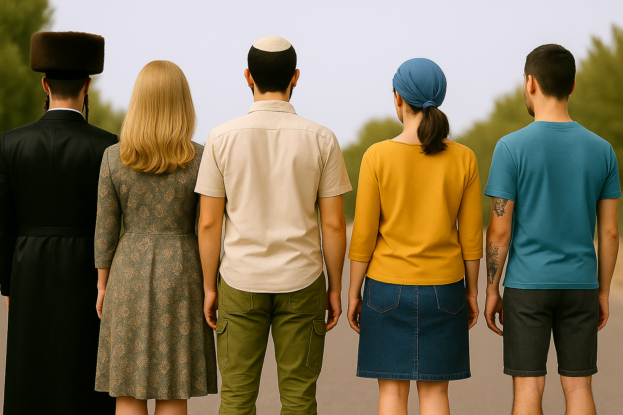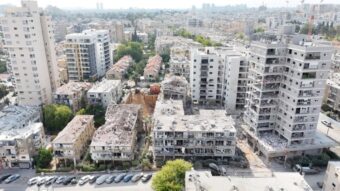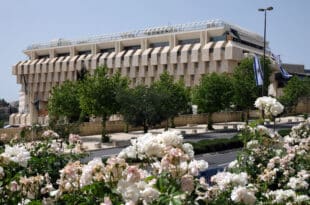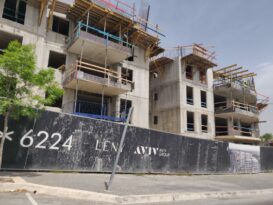Navigating Israel’s religious landscape can be both exciting and confusing for prospective olim. While labels like “ultra-Orthodox,” “Modern Orthodox,” and “secular” may feel familiar, they don’t necessarily apply to religious communities in Israel in the same way. This guide provides an overview of the various religious sectors in Israeli society, ranging from Haredi and Religious Zionist to Masorti, hiloni, and liberal streams, and compares them to their North American counterparts. With practical insights on lifestyle, philosophy, education, and neighborhoods, it’s designed to help you find the community where you’ll feel most at home.
For many individuals and families considering aliyah, one of the most important aspects of choosing where to live is finding a community that aligns with their religious lifestyle. But figuring that out in Israel isn’t always simple. The terms used by Diaspora Jewry don’t always translate cleanly for religious communities in Israel, and the everyday realities on the ground often defy clear categories.
This guide won’t cover everything, but it aims to help future olim understand religious communities in Israel, how they compare to what you may be accustomed to, and how to find a community that aligns with your values, lifestyle, and family needs.
Israeli Haredi vs. American Ultra-Orthodox
Haredi Jews in Israel are often compared to North America’s ultra-Orthodox, but there are significant differences. In North America, ultra-Orthodox Jews often work in secular professions and have some level of general education. In Israel, many Haredi men don’t work, dedicating their time to full-time Torah study in kollels, while women are usually the main breadwinners.
The economic gap between these two groups is stark. Israeli Haredim are one of the poorest segments of the population, relying heavily on government assistance and community support. In contrast, many ultra-Orthodox families in the U.S. earn above the national average.
Education and Culture: Education is another key difference. Nearly half of Israeli Haredim have only a primary school education, and boys’ schools often exclude secular subjects altogether. In the U.S., it’s not uncommon for ultra-Orthodox Jews to attend college or professional programs, especially in larger cities. Culturally, Israeli Haredi communities are highly insular, with gender separation in public spaces and strict dress codes. Those unfamiliar with these norms may find integration difficult.
Military Service and the State:
Another major distinction is the relationship with the state and the army. Most Israeli Haredi men do not serve in the Israel Defense Forces (IDF), citing religious commitments to Torah study. This exemption has been a source of significant social and political tension within Israeli society. By contrast, in North America, ultra-Orthodox communities generally support the concept of national service, though they are not typically confronted with the same military expectations.
Many Israeli Haredim maintain a complex relationship with the state itself — participating in elections and benefiting from state-funded services, yet often opposing Zionist ideology or viewing the state as a secular entity separate from their religious worldview. In some extreme communities, there is outright opposition to Zionism, while more moderate Haredi groups engage pragmatically with state institutions.
Israeli Religious Zionist (Dati Leumi) vs. American Modern Orthodox
If you’re Modern Orthodox in North America, you may be drawn to Israel’s Religious Zionist (Dati Leumi) communities. While there is significant overlap, there are also notable differences to consider when understanding these religious communities in Israel.
Religious Zionist families in Israel tend to blend Torah study, secular education, and national service. Schools offer both Torah subjects and secular studies, and many boys go to Hesder yeshivot, where they combine army service with Torah learning. Girls may attend midrashot where they study Torah before or after their national service, and most opt for sheirut leumi instead of army service.
Religious Zionism is often more ideological than American Modern Orthodoxy. It’s strongly shaped by Zionist thought and the writings of figures like Rav Kook, who saw the modern state as a religious vehicle for redemption. This plays out in everyday life, where community involvement and national service are deeply valued.
In the U.S., Modern Orthodoxy often focuses more on individual religious observance, educational achievement, and synthesis with broader culture. While halacha is still central, the philosophical backdrop tends to be Torah U’mada or Torah Im Derech Eretz, which promote engagement with secular knowledge as a religious value in its own right.
For olim, the key is understanding the mindset: Religious Zionist communities may be more politically active and ideologically aligned with the state. You may need to adjust your expectations regarding aspects such as language, dress codes, and community standards.
Masorti (Traditional) Jews in Israel
About a third of Israeli Jews identify as Masorti (traditional), which should not be confused with Conservative Judaism, also known as the Masorti Movement in Hebrew. These Jews often combine religious traditions with a modern or even secular lifestyle, but some Jewish rituals, beliefs, and holidays remain integral to their identity. Men may put on tefillin daily, women may light Shabbat candles, and families may have Shabbat meals and observe certain aspects of kosher observance. Many Masorti Israelis rarely attend synagogue, but when they do, it will be an Orthodox synagogue.
This group is especially prominent among Mizrahi Jews (from Middle Eastern and North African backgrounds), who comprise a significantly larger share of Israeli society than in North America. Mizrahi families often pass down Jewish traditions culturally, without the denominational structures common in the West.
Masorti families typically send their kids to secular public schools, sometimes supplemented with Jewish content. They often support Judaism in public life but oppose religious coercion. It’s a flexible, culturally rooted way of being Jewish that doesn’t always fit North American frameworks.
Israeli Hiloni vs. American Secular/Unaffiliated
Nearly half of Israeli Jews call themselves hiloni (secular), but that doesn’t mean they’re disconnected from Jewish life. In Israel, Jewish culture is part of the national identity. Even secular Israelis often celebrate the holidays to some degree and sprinkle religious terminology into their casual conversations.
Judaism in Israel isn’t confined to the synagogue — it shows up in the school calendar, the food in stores, and the Hebrew language itself. Most secular kids attend schools that include Jewish history and culture in the curriculum.
Unlike in North America, where secular Jews often need to seek out Jewish experiences actively, Israeli secularism is immersed in Jewish culture. It’s not unusual for someone to identify as secular and still feel deeply Jewish. That being said, many hiloni Israelis identify as Israeli first and Jewish second.
Hiloni Israelis are more likely to support the separation of religion and state. Many want civil marriage, public transportation on Shabbat, and less control by the Orthodox establishment. Still, they retain a strong sense of Jewish belonging rooted in nationality and shared heritage.
Reform and Conservative Judaism in Israel
Liberal streams of Judaism are well-established in North America but remain relatively small in Israel. Combined, these movements represent a small percentage of the population, though they are growing and becoming more visible. There are over 100 liberal congregations across Israel, often anchored by English-speaking olim who value egalitarian services, inclusive theology, and pluralism.
Still, challenges remain. The state does not recognize Reform and Conservative rabbis for many official functions, and their movements receive far less government support than Orthodox institutions. Legal wins, like the recognition of some non-Orthodox conversions and funding for a small number of liberal rabbis, are steps forward, but the gap remains significant.
Most families in these communities send their children to public or Religious Zionist schools, supplemented by synagogue-based programs or community initiatives. These communities offer meaningful Jewish life for those committed to progressive values. They may require a bit more effort to find, but they are active, passionate, and deeply welcoming.
Location, Community, and Real Estate
The various religious communities in Israel often live in specific geographic areas. For example, Bnei Brak and the Mea She’arim neighborhood of Jerusalem are almost entirely Haredi. Apartments are older and densely packed, and the communities are tightly knit. Real estate prices are lower than in many other places in the country, but still reflect the area’s high demand among Haredi families.
Ramat Beit Shemesh, on the other hand, offers a mix of Orthodox communities, including areas that are completely Haredi and those with significant Religious Zionist populations, all at more affordable prices than nearby Jerusalem.
There are many Religious Zionist communities, including a large number located over the Green Line in Judea and Samaria. Some, like Efrat and Modi’in, are more liberal and attract a high number of English-speaking olim. Modi’in is a modern and centrally located city, boasting high-quality schools and infrastructure. Efrat, located in Gush Etzion, offers a strong sense of ideological community.
Tel Aviv is largely secular, diverse, and dynamic. It’s also the most expensive city in Israel. Religious life is limited, but pluralistic and cultural expressions of Judaism are abundant and diverse. Haifa is more affordable and known for its diversity and coexistence. It has a mix of hiloni and masorti populations and growing liberal communities, with a lower cost of living compared to cities in the center.
Ra’anana and Modi’in are go-to cities for English-speaking families looking for liberal or mixed communities. They’re affluent, family-friendly, and offer a high standard of living, along with a range of Jewish options.
Jerusalem has it all — Haredi enclaves like Geula, Religious Zionist neighborhoods like Arnona and Kiryat Moshe, and pluralistic areas like Baka and the German Colony. Real estate in this area can be expensive, but it reflects the city’s rich religious, cultural, and historic significance.
Final Thoughts for Olim
When looking for a religious community in Israel, remember that Israeli religious life doesn’t always mirror what you’re used to: denominational labels may not mean the same thing, and religious norms might be stricter or looser than you expect. You might need to compromise on language, schooling, or synagogue culture.
The best way to choose a community is to visit. Spend time in the neighborhood, attend a local shul, talk to other olim, and get a feel for the schools. Think about what’s most important for your family — religious philosophy, educational style, lifestyle, or all of the above.
Most of all, know that Israel offers a wide and rich spectrum of Jewish life. With a little research and some firsthand experience, you can find the place where your family will feel at home.
The Buyitinisrael Editorial team is made up of industry experts, journalists, researchers, editors, and translators working together to deliver reliable, up-to-date information about the Israeli property market — all in English. With a strong focus on transparency and accessibility, our goal is to empower English-speaking buyers by helping them understand the market and navigate the real estate process with clarity and confidence.
For inquiries, email info@buyitinisrael.com.




